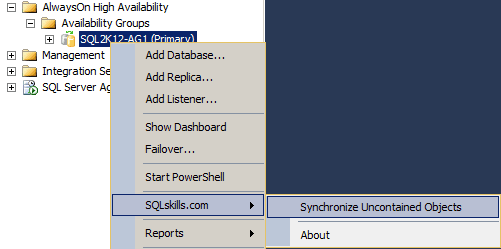'You often see Page Life Expectancy referred to as an interesting performance monitor counter. And it can be! It indicates for how long a page is expected to stay in cache, from the time it was brought into cache.
But just looking at a snapshot value doesn't say that much. It might be high, but that is because you haven't had a high turnover of you pages for the past couple of hours. Or the other way around, you happen to look just after a very rare monster query. Furthermore, having a log can show you how PLE changes over time.
"The app was slow at two o'clock today."'...
http://sqlblog.com/blogs/tibor_karaszi/archive/2016/09/07/log-page-life-expectancy-over-time.aspx
'I first became aware of the server-wide lock taken out by SSAS when processing finishes - and the issues that this can cause - from this blog post by Andrew Calvett back in 2009. More information on how locking works in SSAS can be found in chapter 26 of “Microsoft SQL Server 2008 Analysis Services Unleashed”, while the most comprehensive discussion of this topic can be found in this post by Jason Howell:
https://blogs.msdn.microsoft.com/jason_howell/2012/07/03/analysis-services-stops-accepting-new-connections-processing-commit-locks-hurt/'...
https://blog.crossjoin.co.uk/2017/03/18/ssas-2016-locking-improvements/
'Trace flags are used to temporarily set specific server characteristics or to switch off a particular behavior. There are 3 types of trace flags in SQL Server 2016:
- query trace flags
- global trace flags
- session trace flags'...
https://www.sswug.org/alexanderchigrik/sql-server/some-useful-sql-server-2016-trace-flags/
'Moving data around independent and autonomous systems is all that most software does these days and JSON is the ubiquitous language behind data transfer. Short for JavaScript Object Notation, JSON is a text-based way to lay out the state of an object so that it can be easily serialized and transferred across the wire from one system to the next, especially in heterogeneous systems.
JSON has become what, in the end, XML failed to be—the lingua franca of the Web. Personally, I wouldn’t buy into much of the fact that JSON is easier to read than XML. On the other hand, JSON is a text format much more compact and lightweight than XML, editable by humans and quick to parse and understand for computers across a long list of software and hardware platforms.'...
https://msdn.microsoft.com/magazine/mt797647?MC=SQL&MC=JavaScript&MC=WebDev&MC=DataMgmt
'An important part of ensuring application functionality with Availability Groups is manually maintaining any uncontained objects across each of the replicas in the Availability Group. As more of our clients upgrade to SQL Server 2012 and implement Availability Groups, we’ve had to face the challenges of maintaining uncontained objects across replicas multiple times and there hasn’t been a good solution to the problem. No one solution is a perfect fit for every client, and one of the challenges is the difference in change control policies that might exist. Some environments might be agreeable to an SSIS package that runs nightly to copy all logins and jobs, where others require a script be generated to accomplish the same tasks.
To solve this problem, we developed the SQL Server 2012 Availability Group Add-in for SQL Server 2012 Management Studio specifically targeted at enhancing the UIs for Availability Groups. The add-in creates an additional menu in Object Explorer for the Availability Group node for easy access.
 '...
'...
https://www.sqlskills.com/blogs/jonathan/synchronize-availability-group-logins-and-jobs/
 '...
'...